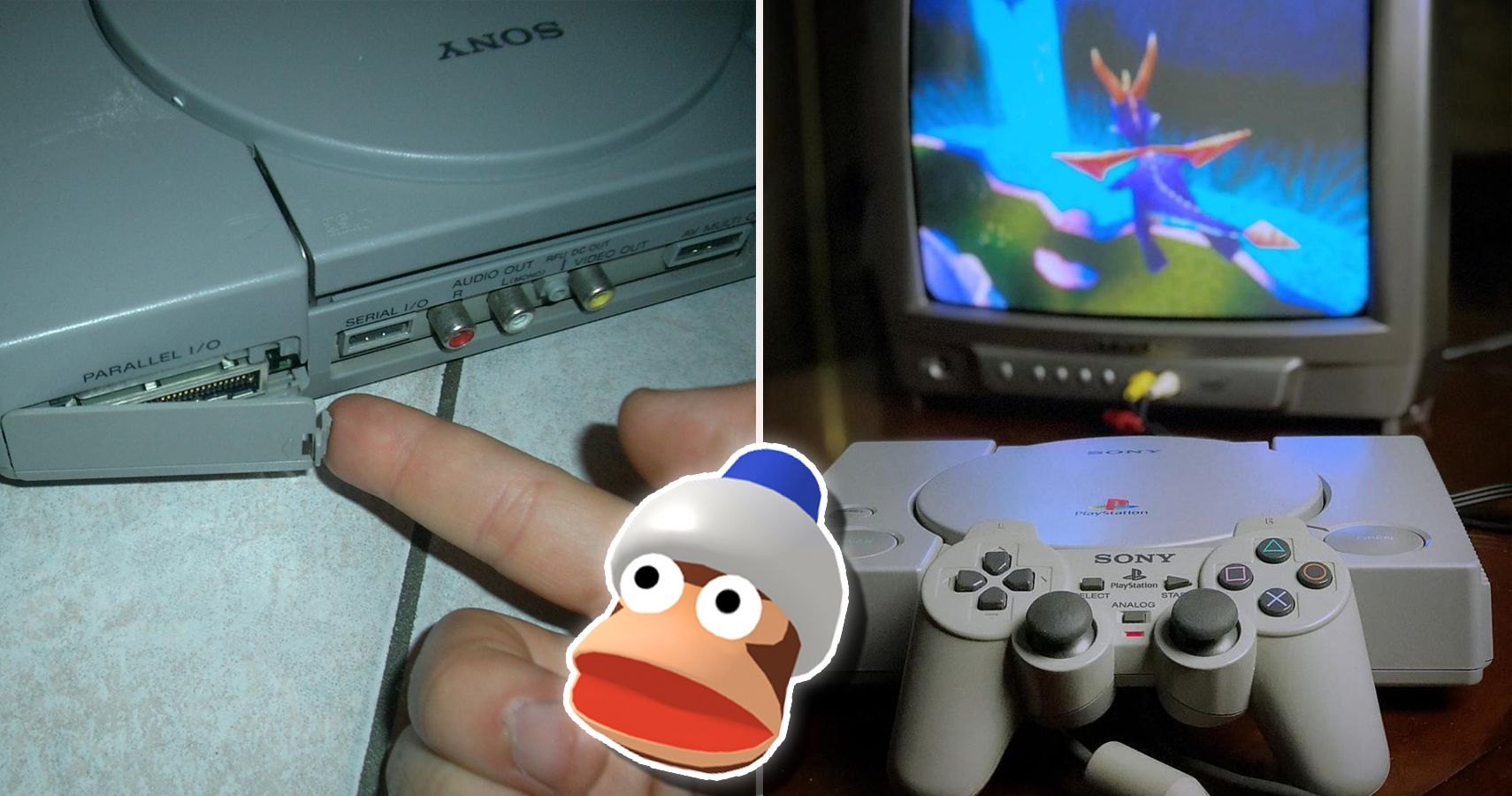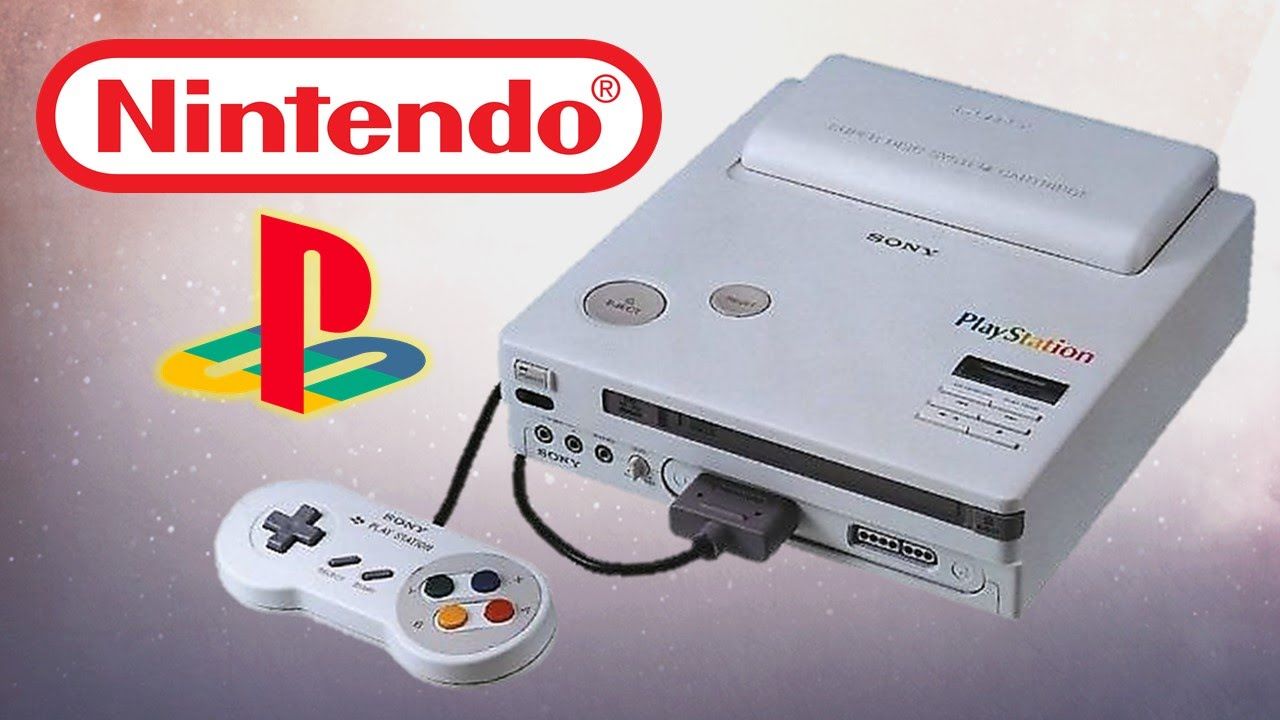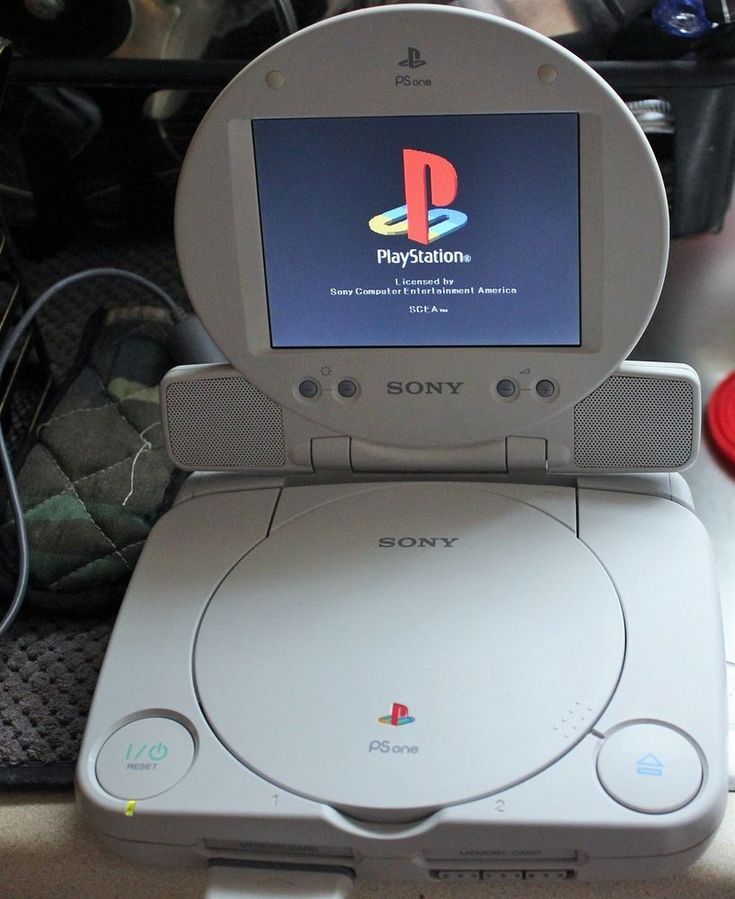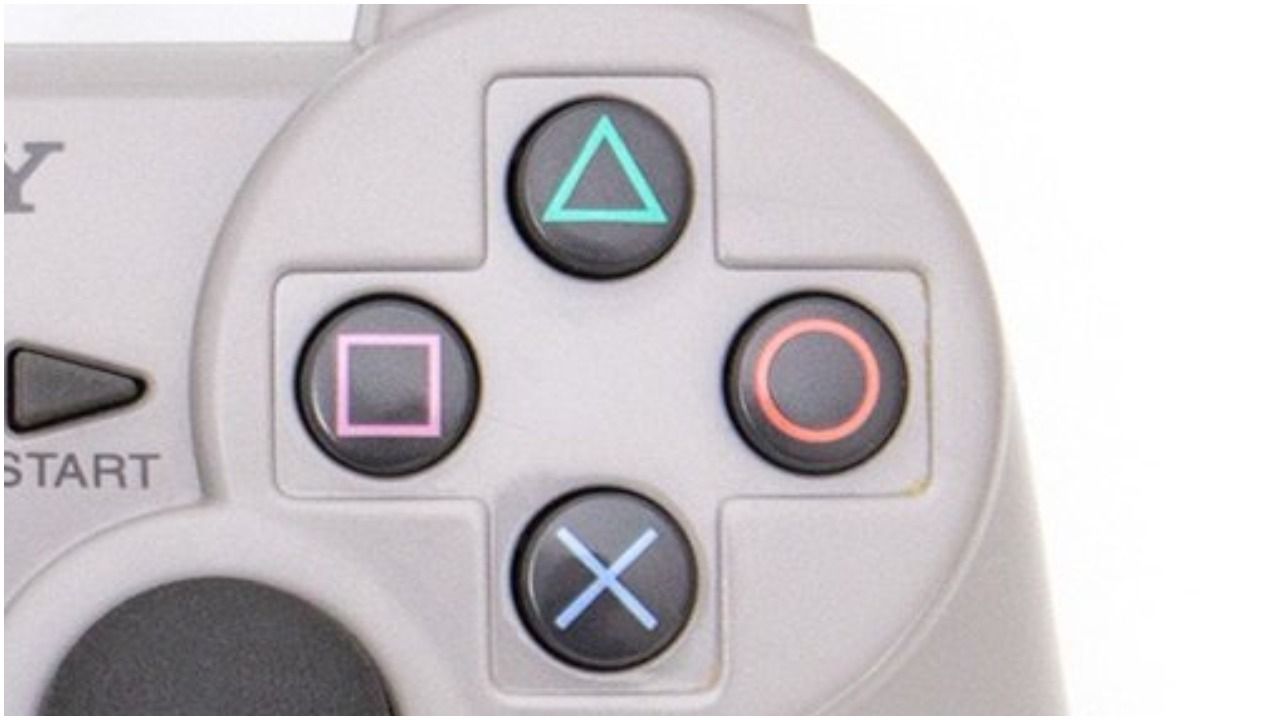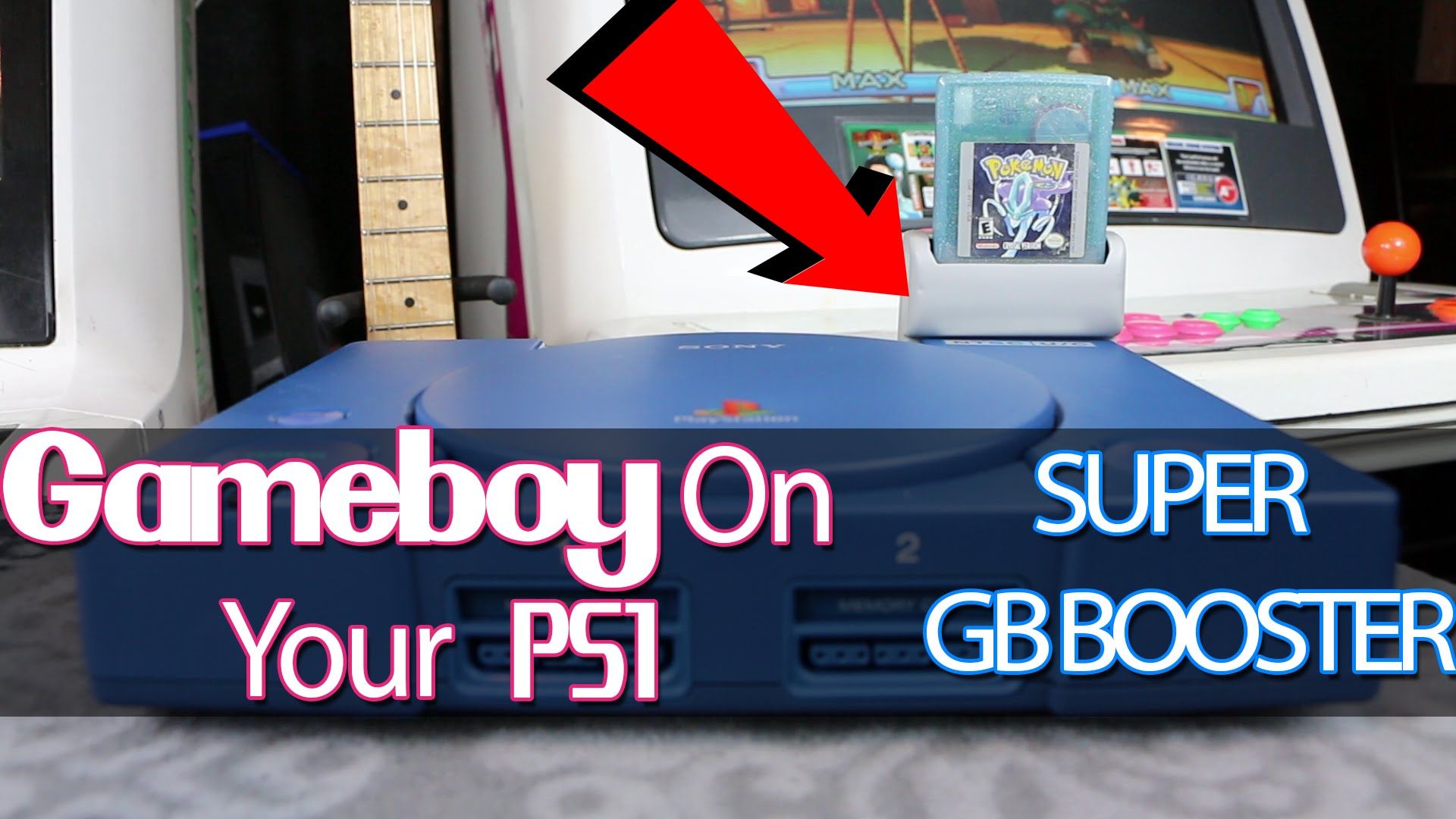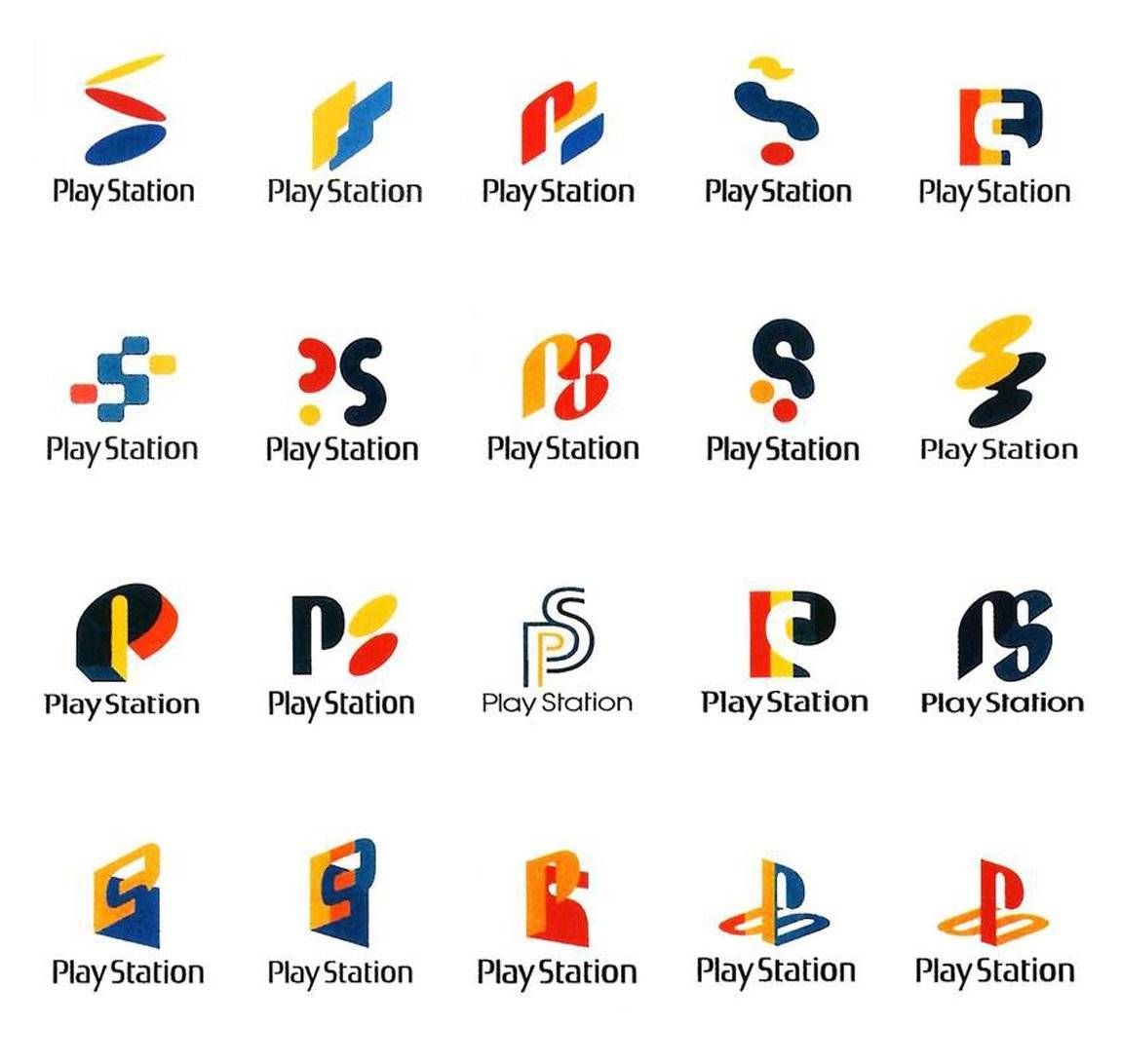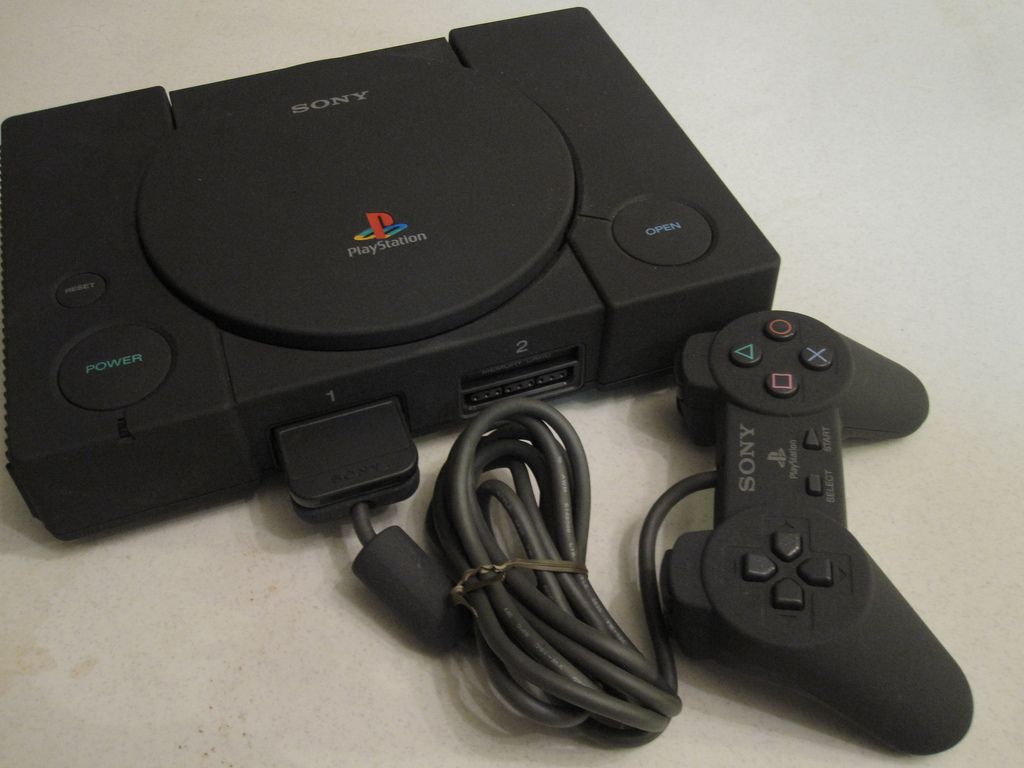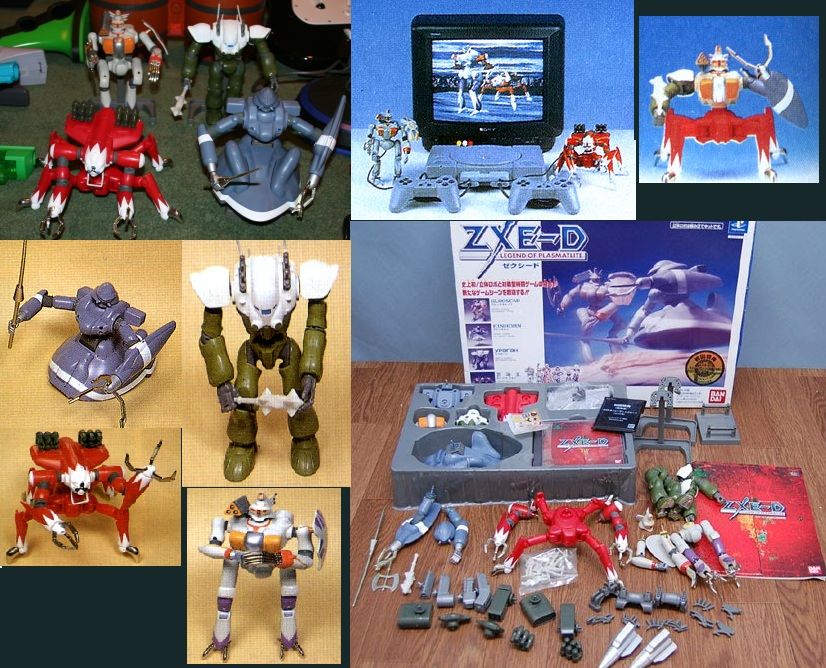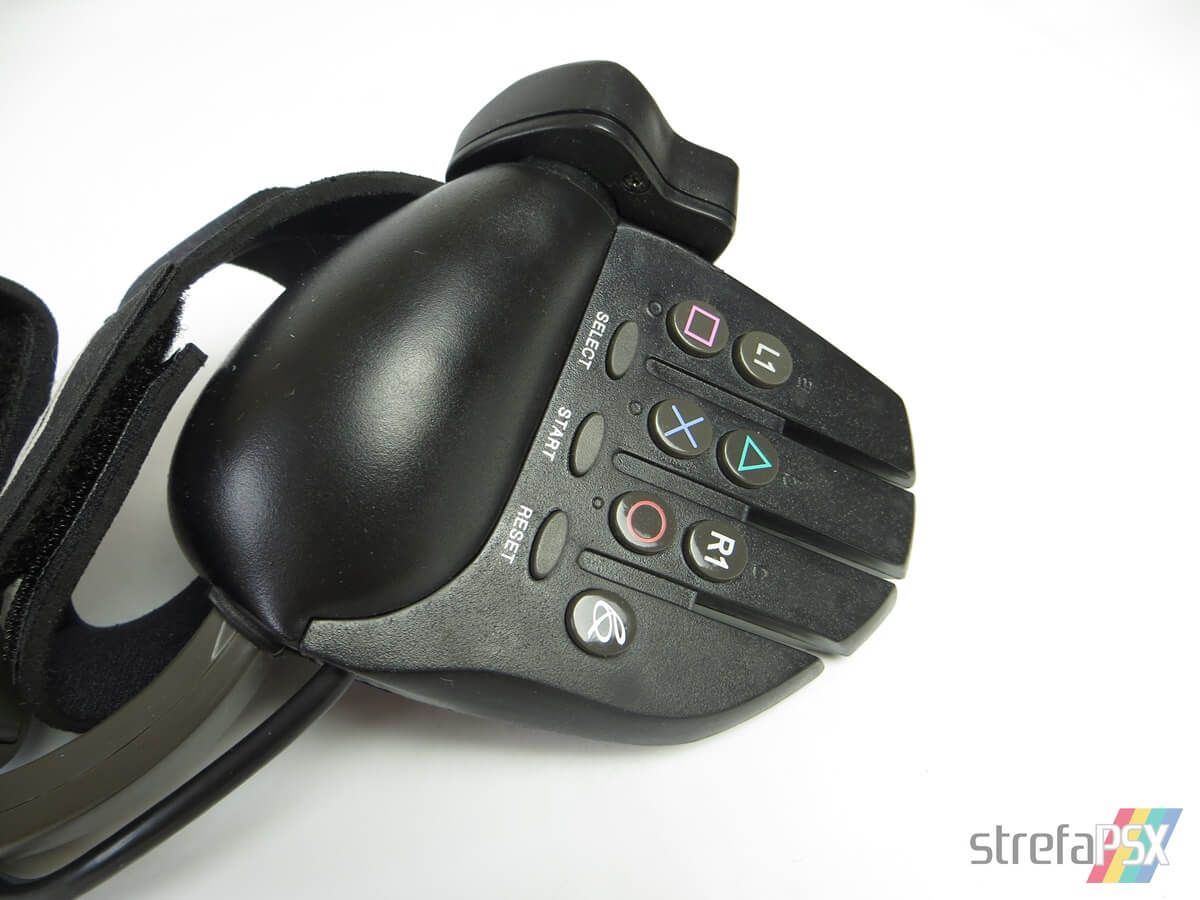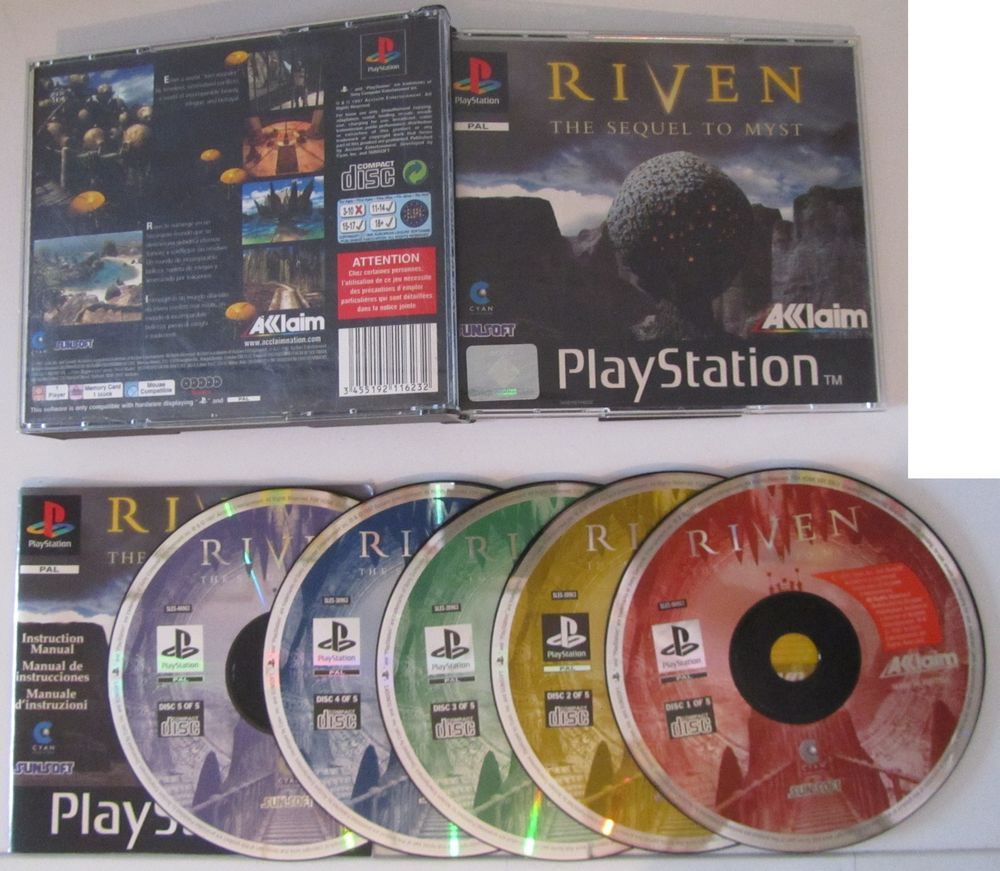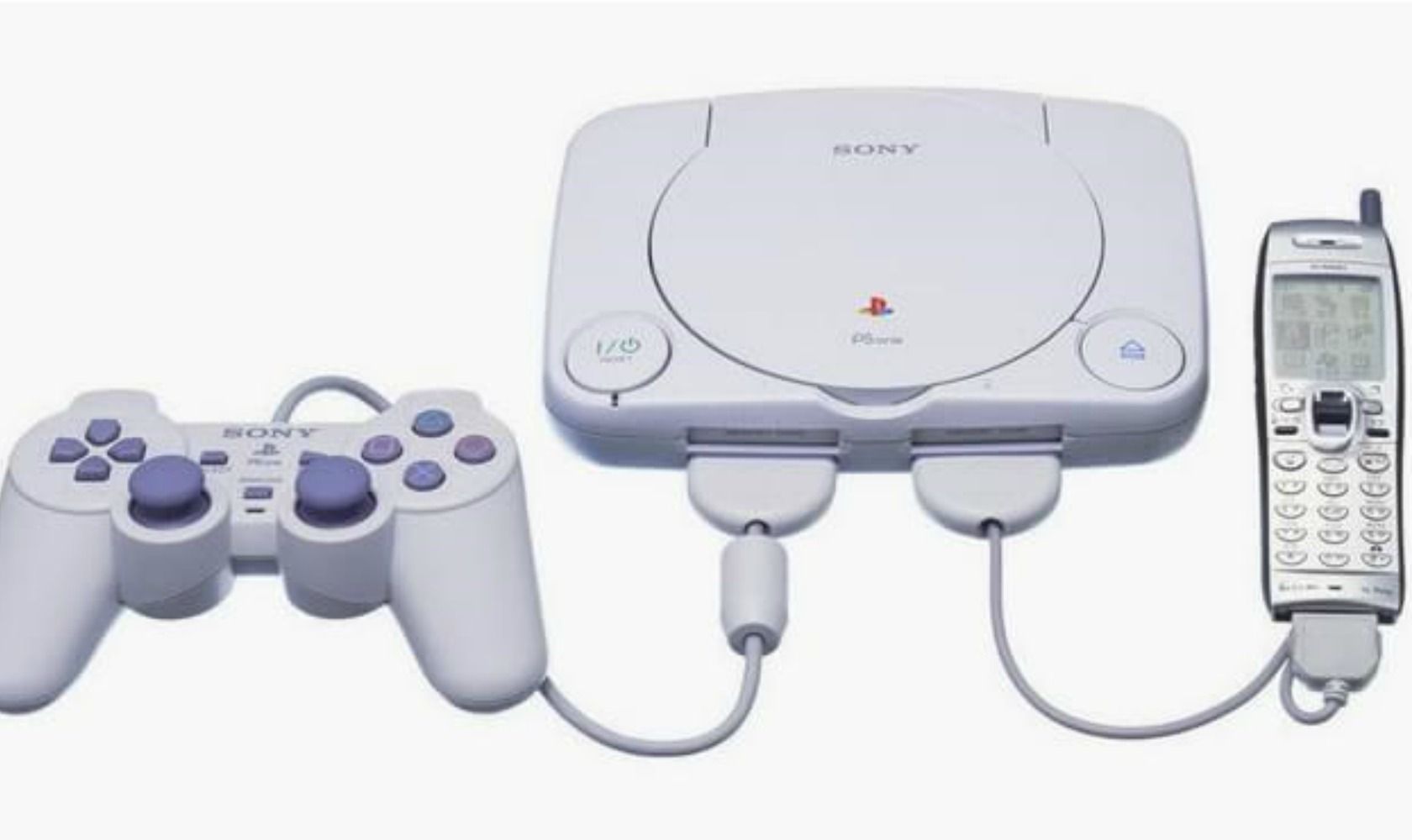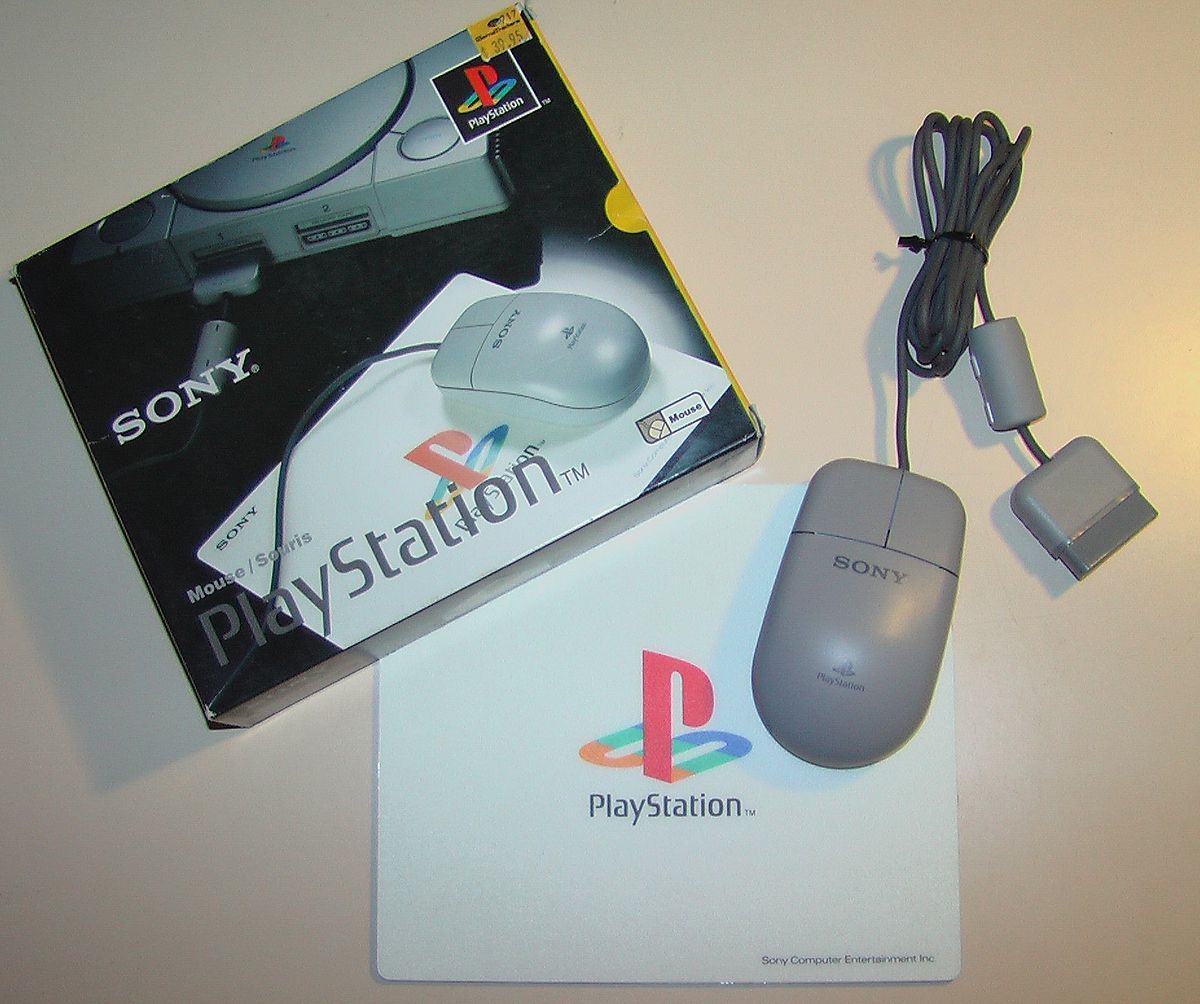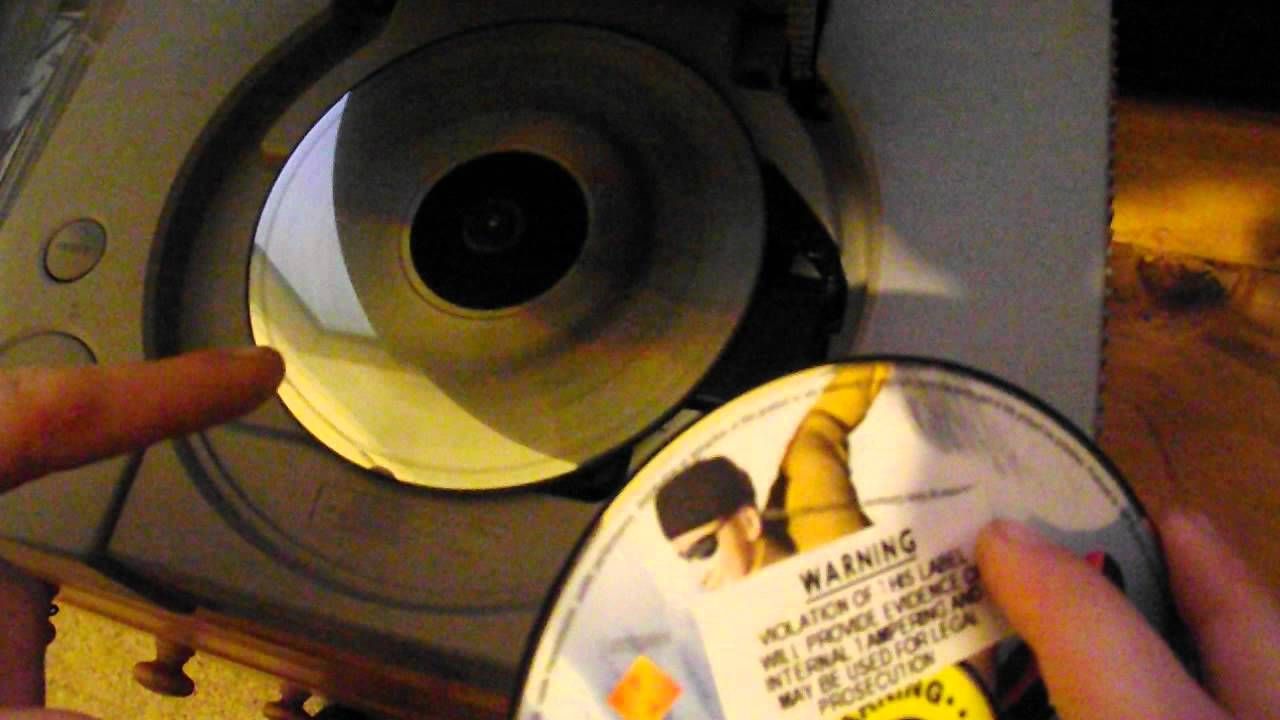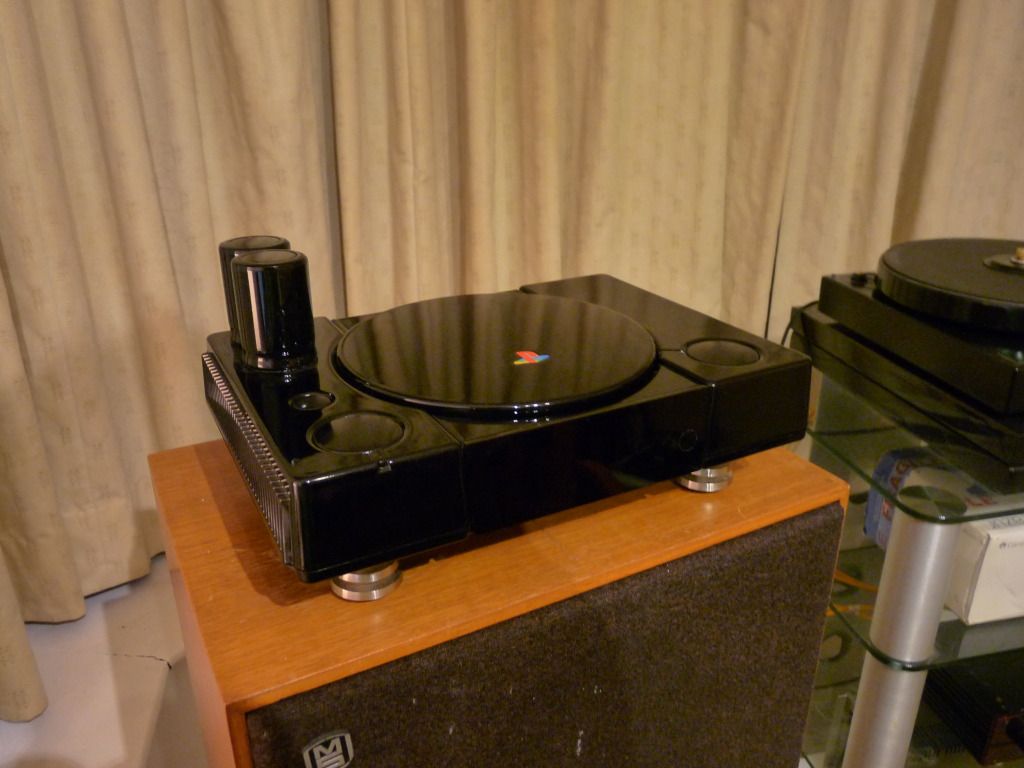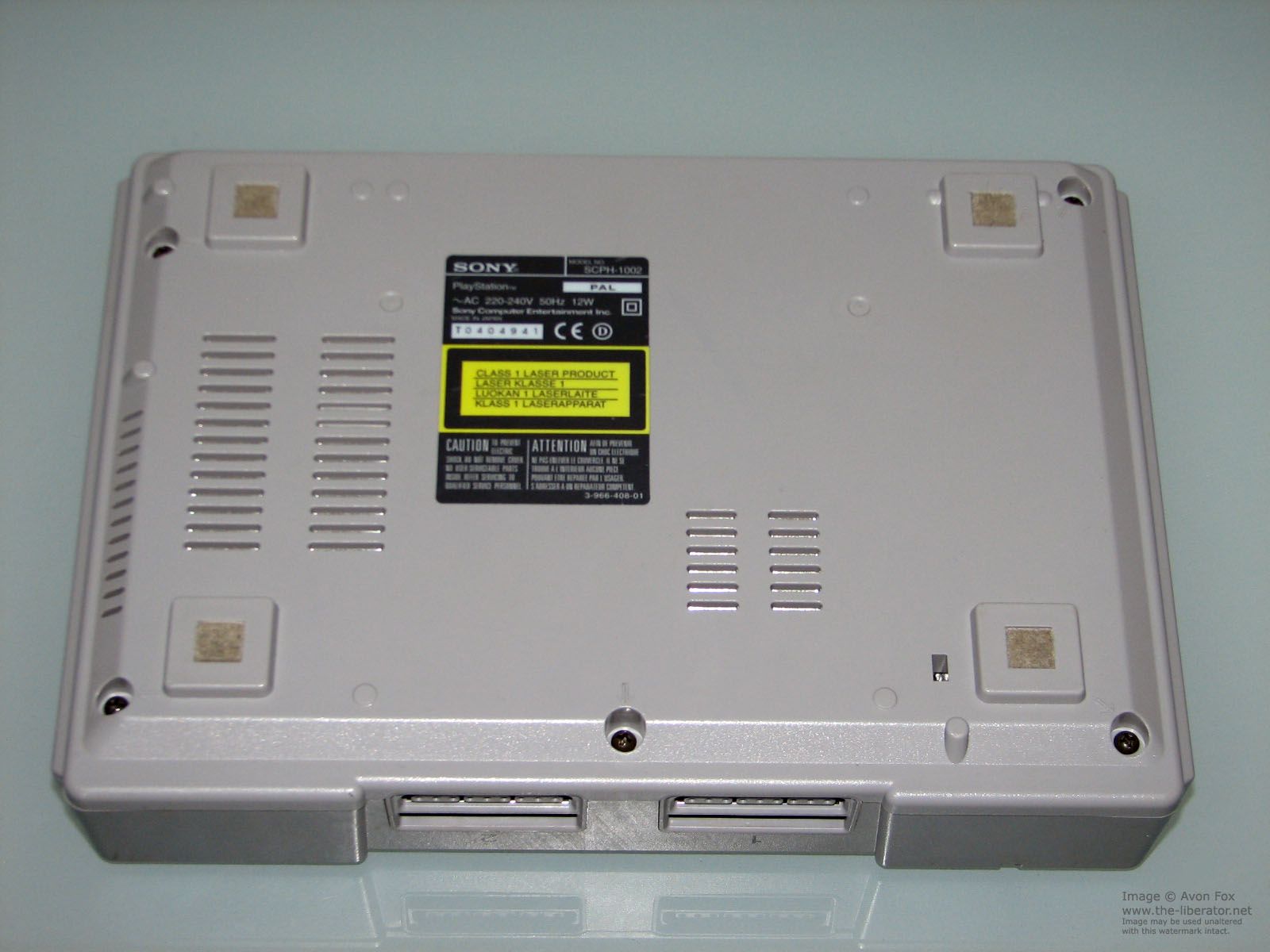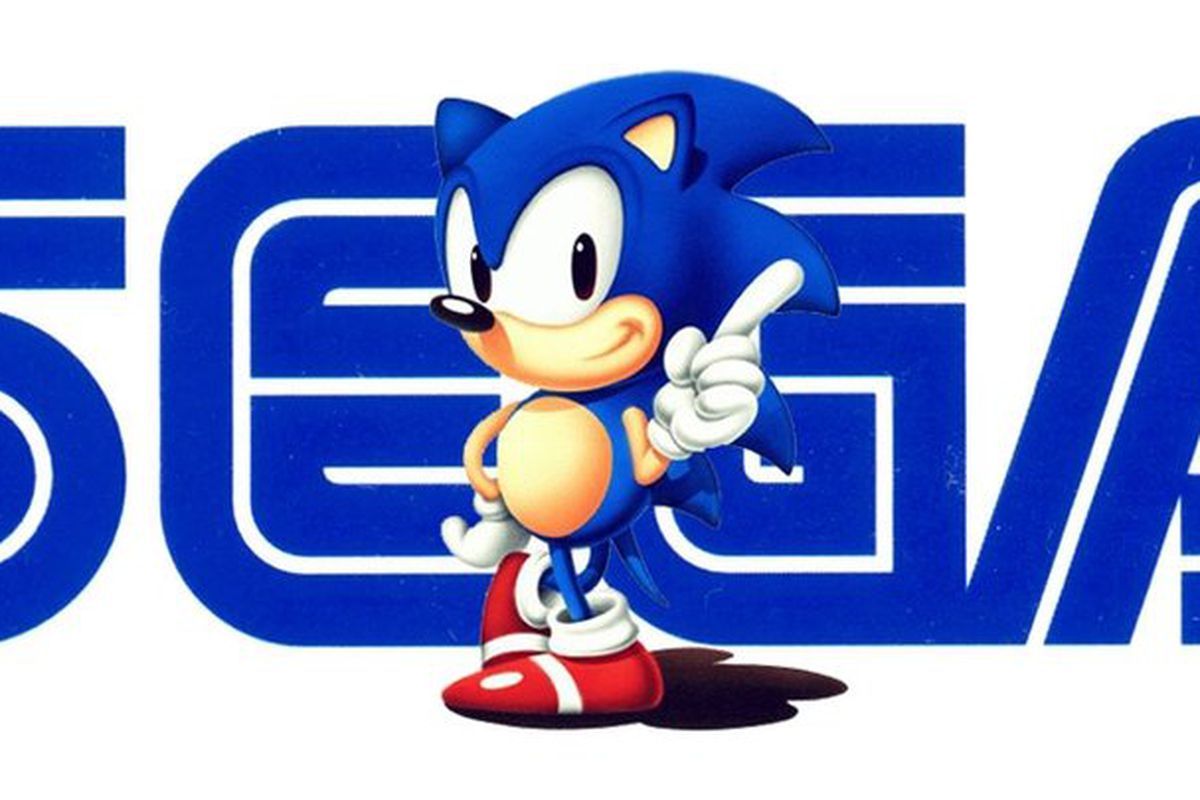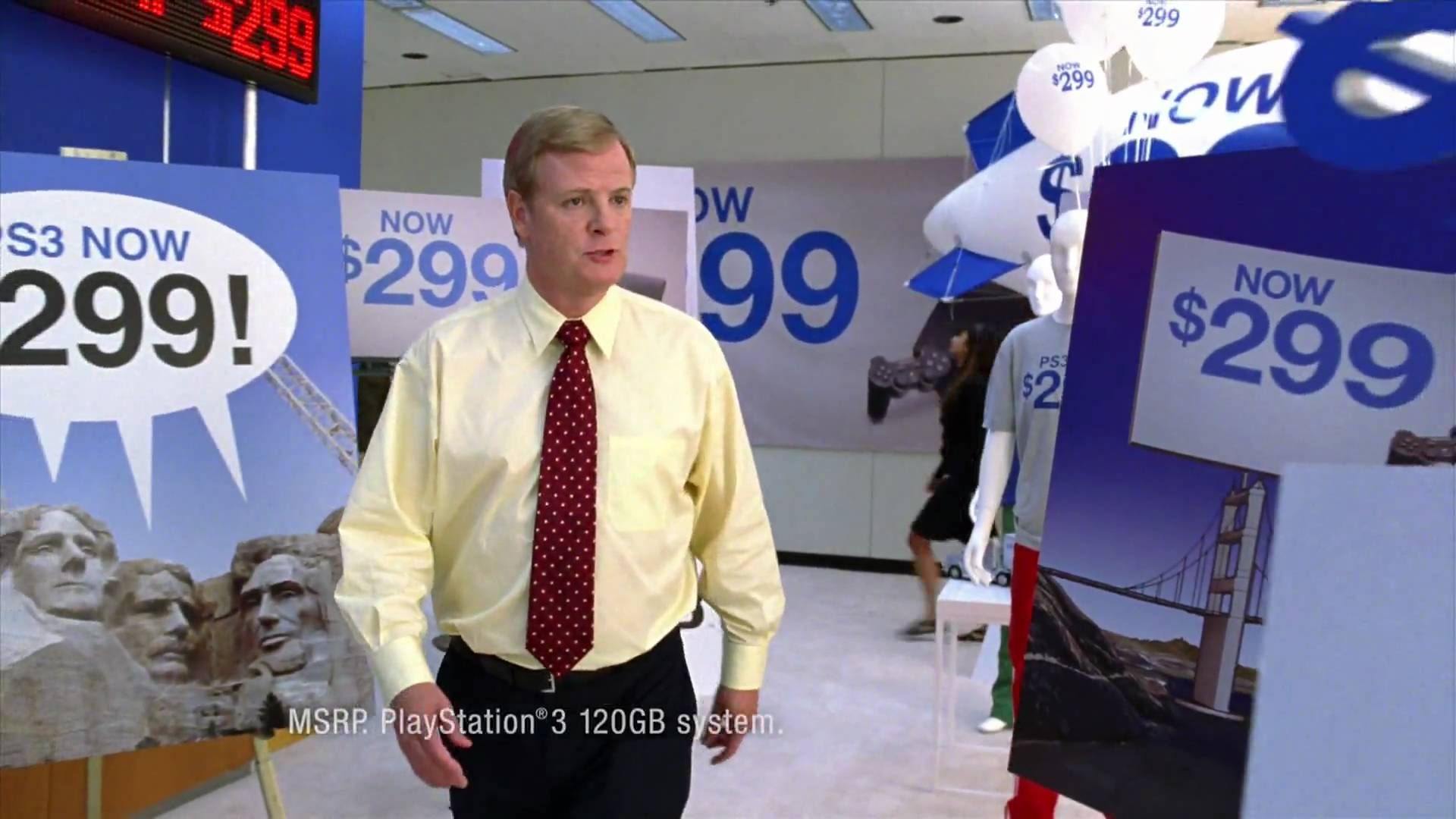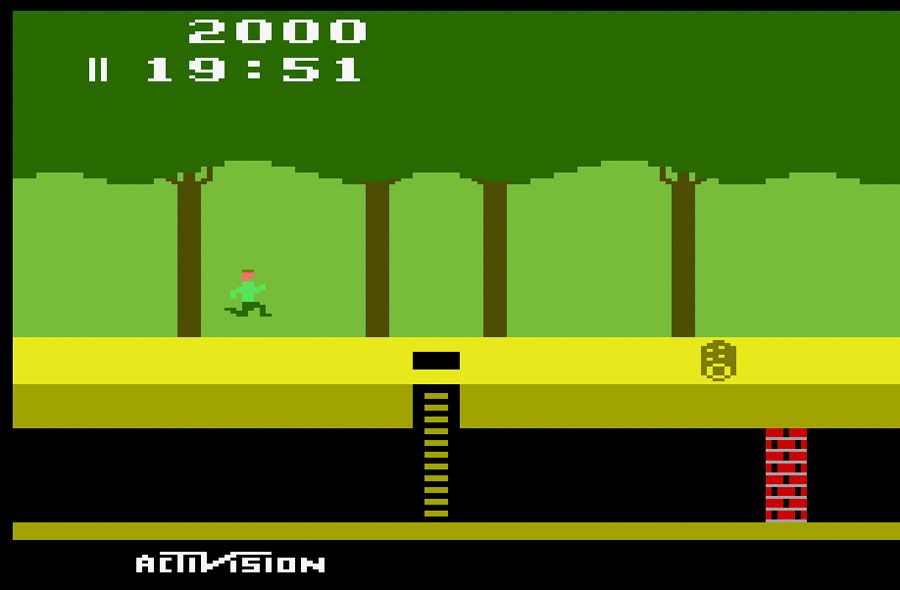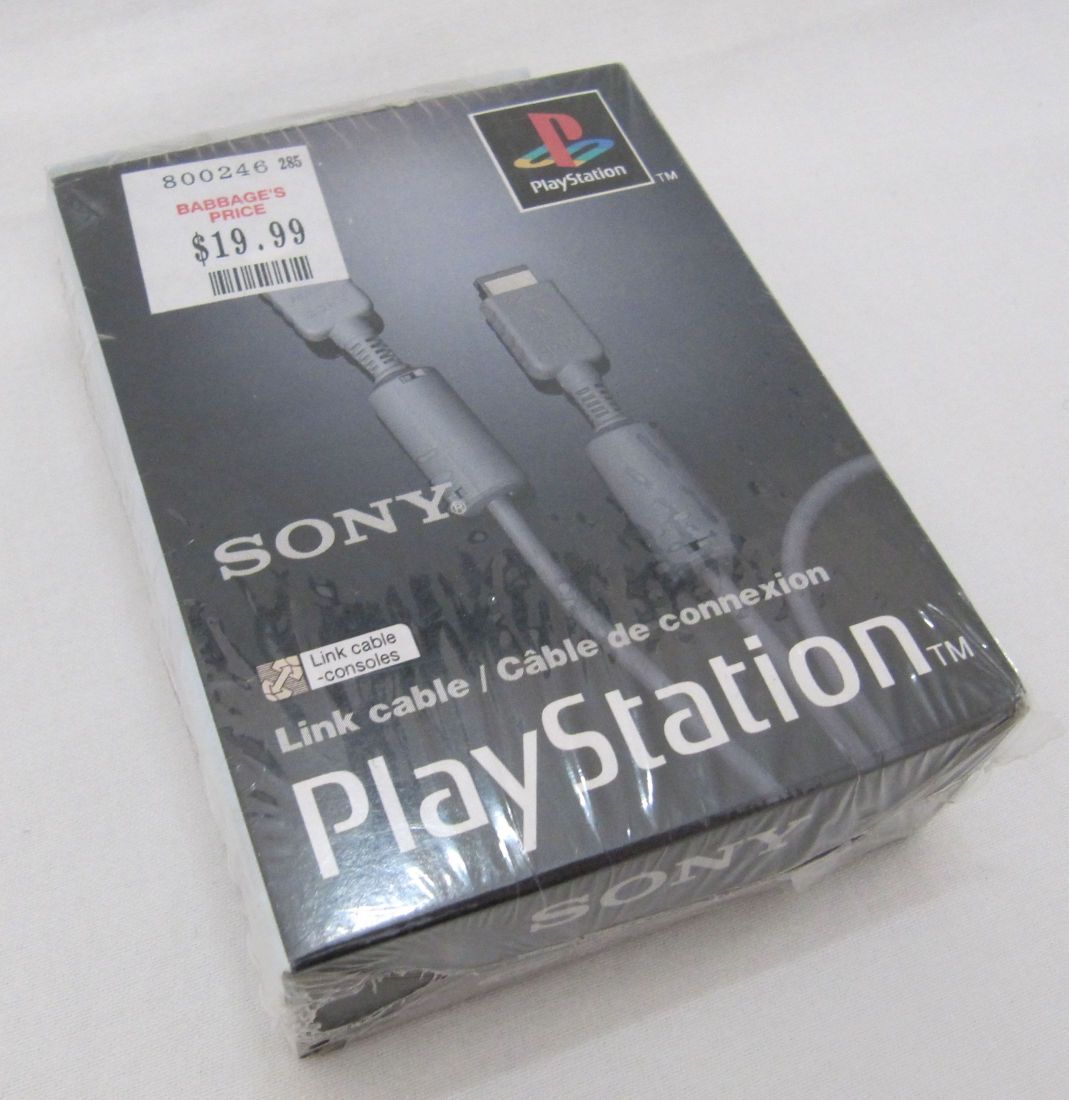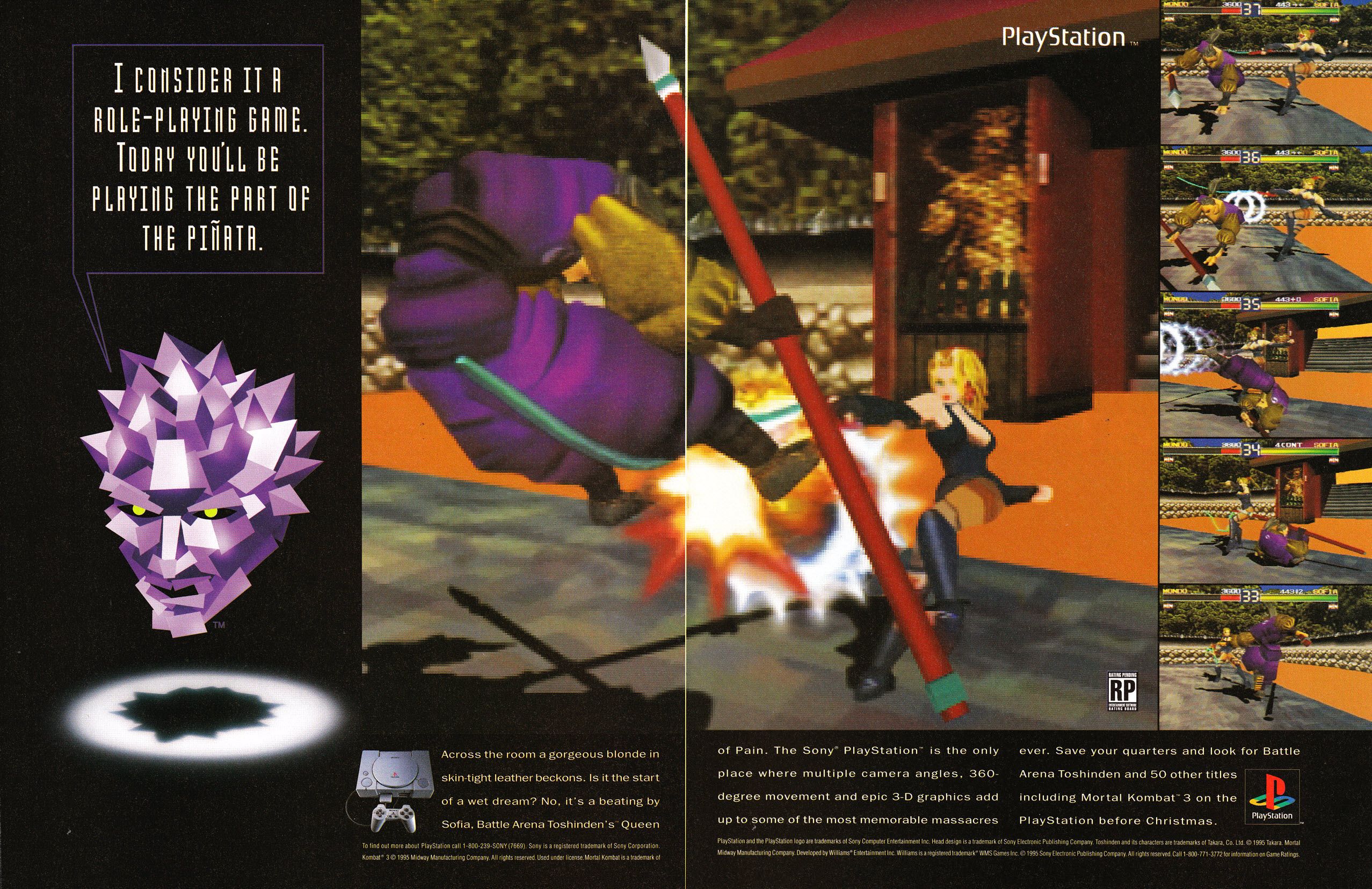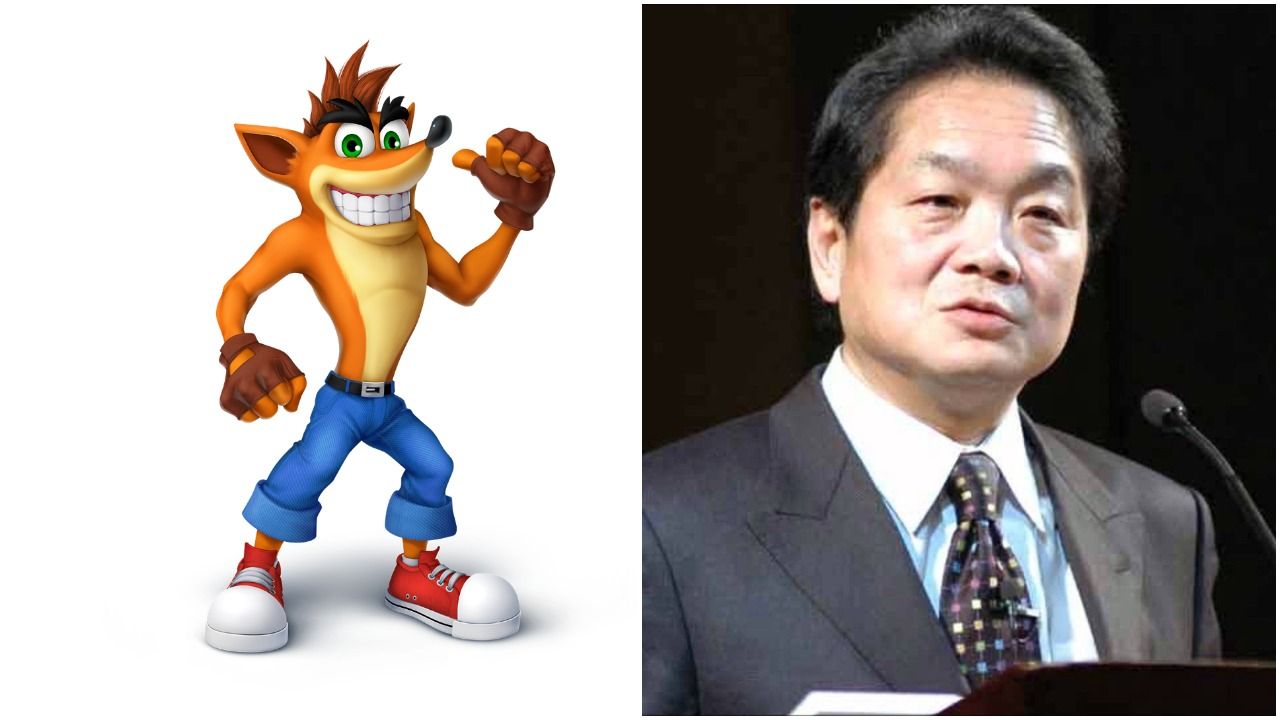The original PlayStation forever changed the video game landscape, thanks to its 3D- technology and its variety of games. Traditionally, the market was dominated by friendly-toned games such as Nintendo's Super Mario Bros and Sega's Sonic The Hedgehog. However, Sony managed to attract the grown-up gamers by releasing titles that mostly appealed to a mature audience. Resident Evil and Twisted Metal are perfect examples of Sony's vision as both of these M-Rated games are considered to be PSX classic. The PlayStation was also a versatile system as games like Spyro the Dragon, and Crash Bandicoot were mostly children-oriented titles that could appeal to both kids and grow-ups. While junior players are majorly familiar with the PlayStation 4, we believe it is essential for people to know about the brand's original console. Therefore, we present you 25 PlayStation 1 Secrets Everyone Should Know.
We're proposing to you a trip back to when SD-TVs and wired controllers were the gaming norms. Though the list is mostly aimed at casual players, even the most seasoned players will find useful pieces of information about this 23-year-old console. After all, the Internet wasn't the same as it is now and we were surely too busy playing on our games (I know I was!). Furthermore, we're quite confident that you'll be the center of attention for your next gaming party. As always, we invite you to share and comment the article; every opinion matters, whether good or bad. Time to bring it back to the 90s!
25 Nintendo & Sony's Unspoken Partnership
We have to thank Nintendo for motivating Sony on creating the PlayStation. Odd isn't it? Well, the juggernaut console is the revenge result of a failed collaboration between the two companies. It may be a bit hard to believe, knowing that Nintendo projects itself as an affable company whose executives seems to be more congenial than your second-grade elementary teacher. Sadly for Sony, they learned that Nintendo was strictly about doing business. What Nintendo didn't know is that the unsuccessful partnership would forever decrease his role in the video game industry. Back in the 90s, the Super Nintendo dominated the video game sales chart. The company giant wanted to collaborate with Sony for a new CD-ROM add-on on its famed console.
Sadly, the upgraded console never released due to failed negotiations over the property rights.
Sony's president was so outraged at the situation that he instructed the engineers to continue development of the add-on, which resulted in being the PSX. We're sure that Nintendo is regretting its decision now. In the end, the PS1 proved to be the true victor with more than a 100 million units sold, compared to the Nintendo 64 who only sold 33 million systems. Though Nintendo would later reclaim its throne with its Wii console, they'll forever lose the authority they had in the video game market, thanks to their business practices.
24 A Mini-Portable Screen For Your PS1
The PlayStation Link Cable is one of the many articles Sony released for its console. Though many third-party accessories were also supporting the console, only a handful of them proved to be useful (no offense, people). Also, first-party add-ons always proved to be more reliable than third-parties, as Sony officially licensed them. While most casual players are familiar with the Memory Card and the Dualshock controller, there were many first-party attachments that significantly improved the console. One of them allowed you to play your games without an RCA cable.
The PlayStation Mini LCD, a Sony licensed product, is a small screen that acts as a portable TV for the PSOne, exclusively.
Players can only screw the mini-screen into the output holes on the back of the console to activate it. One of its most significant advantages is that the overall picture quality was slightly better than the regular TVs, at the time. Despite its size, the image fits perfectly onto the screen. While the audio has been affected because of its size, the Mini LCD still offers a certain sound quality. Though the attachment was pricey at the time, collectors may find it for a handful of dollars on reselling websites.
23 3D Philosophy
The Dualshock controller remains a signature element of the PlayStation thanks to its look and built-in rumble feature. One of its particular points is its button display. As opposed to the traditional controllers who use the alphabetic letters (A-B-Z, etc.), the Dualshock uses the "Triangle, Square, X, and Circle" format. Though gamers seem to didn't mind it, the forms display has a profound explanation.
Initially, Sony wanted to represent the 3-D gaming concept in the controller. Triangle would represent the view of the player; Square would represent the menu or documents that players would need to consult; and the X/O combination would serve as yes and no, respectively. Sony executives initially had mixed reviews about the controller's design as they wanted it to resemble the SNES controllers. However, Sony president Norio Ohga would end up backing Goto's model and the executives complied with the designer. While the concept was brilliant, game developers instead opted to program their controls differently than Sony's vision. Nevertheless, we have to credit Goto for defining the PlayStation brand name. On another note, I'm glad Sony never released its PS3 Boomerang controller.
22 The PlayStation Supports Game Boy Games
Sony's initial relationship with Nintendo is the reason why the Play Station exists. Seeing the chances of the two companies collaborating in the future is less likely than winning the lottery. However, you might've not known that it was possible to play Game Boy titles onto the PlayStation. While this may be something your girlfriend would say to catch your attention (or waves of laughter, in my case), the accessory was created by third-party providers.
In a nutshell, players would plug the adapter into the back of the Play Station and voila!
As simple as that, your PSX is ready to play Game Boy cartridges. While the idea would charm many Nintendo and Sony hybrid fans, many reported that the adapter didn't work correctly and that fans would be disappointed at the hardware. The irony of the situation is that it was easier for gamers to play GB games on the big screen, with the PlayStation than with its Nintendo 64 sister console. The N64 has two accessories that enable Game Boy connectivity: the Wide Boy 64 and the Transfer Pak. However, both add-ons have their issues: the Wide-Boy 64 wasn't available for the public, and the Transfer Pak offered a small number of compatible games.
21 So Many Logo Attempts.
The PS logo seems to have been a natural fit for the console. It's marketable, recognizable and represents the three-dimensional vision of the console. Though the emblem changed at each of the console entries, the original PS symbol was still used in many of its accessories, most notably on the DualShock controllers. Still, many players are unaware that the traditional logo was not Sony's first choice.
Japanese designer Manabu Sakamoto created the PS logo. Initially, the artist prepared more than 20 concepts to Sony before choosing the final symbol. If you take a look at the picture above, you can see how Sakamoto had different ideas about the emblem. While most of the pitches aimed to represent the "PS" form, the designer seemed to give a greater importance to the "S" as its shape is being highlighted in all of them. The logo colors are supposed to signify the joy, passion, and excellence that the console brings to the players. While the PS label may be another image to some, it represents nostalgic moments to veteran gamers. We can't help but wonder if choosing a different logo would've had the same impact than the selected one. Quite personally, I'm happy with the current design!
20 The PlayStation That Could Program Games Too
Before the popularity of smartphone apps and the support of developmental games, the indie game scene was only limited to hobbyist programmers. At a time where the Internet was still primitive, amateur techies had limited materials to create their content and no mainstream platform to diffuse their work. Despite that, many gamers were unaware that Sony built a PlayStation development kit for indie talents.
Named the Net Yaroze, the black colored PlayStation allowed amateur developers to create games. Once finished, players could only send their program files to Sony. The company would then release the demos onto its online forum where Yaroze users could share their games and communicate with each other. European players could also play the games on demo discs that were included in the Official UK PlayStation Magazine. Few games proved to have garnered a cult following. For instance, Time Slip, a Net Yaroze platformer demo was ported to the Xbox 360, and PC in 2010. Though Sony wasn't the first company to lend its support to the indie community, it was still nice to see how they envisioned its potential. The console-kit wasn't available to the public as people had to buy it directly from Sony. Oh, and if you think about getting one from eBay, get ready to spend a little fortune.
19 From Building To Playing
You may remember Skylanders as the game series that your children must have continually bugged you to buy for them (if you're a parent of course). Though parents love their kids unconditionally, the family wallet is often hit the most out of their children's materialistic needs. What few of us know is that PlayStation was using the interactive technology before its popularity.
ZXE-D: Legend of Plasmalite was a Japanese exclusive toy-to-life video game, released by Bandai, for the PS1. Similar to the Skylanders series, players could build their robots with customizable parts of the game bundle. Once done, players could scan their robots onto the reader to have their robots in-game. While the gameplay was enjoyable, its visual was horrible as the fighting stages were missing content. Though ZXE-D: Legend of Plasmalite was a pioneer of the toys-to-life business, the game was mostly ignored by Japanese otakus, as Nintendo had just released its Pokémon brand, which sparked a worldwide phenomenon at the time. The game bundle remains one of the most sought items from PlayStation Collectors. Good luck trying to find one! On another note, it's such a shame that Bandai never released this game in North America.
18 The Glove Of The Future
Whats not to love about the Dualshock? Unlike the N64 controller, its design is very comfortable and holds pretty well in the palm of your hands. With that in mind, it is little necessary to buy a third-party accessory. However, players could also use a glove-like controller to play games.
Created by Reality Quest, The Glove: PlayStation controller allowed players to control characters movement directly by the motion of the wrist.
The controller buttons are positioned in the same directional position that they are in the Dualshock. The shoulder buttons are located in the top area of the glove and can be accessed with the thumb. The motion controller also has a unique button that allows you to remap your buttons with preset controllers and to choose the sensitivity level of the motion feature. Lastly, it was possible to change the glove playstyle mode through a switch, located at the back of the console. Though experimental, the glove-controller proved to be uncomfortable as players were forced to maintain their arms leveled up while playing. Furthermore, players had to get used to the location of the controller's buttons. Although located in the same directional position, they are not layered in the same Dualshock fashion as the controller is only held in one hand.
17 More Than A Simple CD
The Play Station remained an exciting console for story-oriented games, thanks to the CD-ROMs' large memory at the time. Though most of the games could fit on a disk, specific titles came bundled in multi discs. Games like Final Fantasy VII and Metal Gear Solid, are solid examples of how players were required to swipe disks, throughout their progress.
If you thought FF VIII or FF IX had the most disc for a PlayStation game, then you couldn't have been more wrong. The puzzle-adventure Riven - The Sequel To Myst is considered as the most massive multi-disc game of the PlayStation, as it comes packaged in five discs. Despite its numerous CD-ROM, the game's file size is roughly 1.4GB in total, which is theoretically less than the size of five combined discs. Many titles, like Fear Effect and Final Fantasy VIII, are bulkier than Riven and only require four CDs. Thanks to technological advancement, players are now able to download games that are easily 50 times the size of full-sized PS1 titles, directly onto their consoles. Imagine how many discs Rockstar North would've had to use to create Grand Theft Auto V on the PS1! Hey, there's nothing wrong with thinking!
16 PlayStation Network 1.0
The PlayStation has many hidden features that gamers are often not aware. Despite its now-primitive hardware, it was possible to do more than playing games and listening to music. Players also could connect to the internet from the console itself. Officially, Sony would introduce online multiplayer in the PS2 console, but they've also released a Japan-exclusive accessory on the PSX.
To summarise, players would insert the cable into the controller port of the console. They would then connect a data-plan enabled cellphone to the wire, and the console would be able to use some internet features such as downloading a few games and browsing the web. Of course, you'd have to consider that 90s cell phones didn't have the same technology as the current ones; Facetime was still a dream that phone makers were trying to apply on home phones (I kid' you not). Therefore, the Internet connectivity was slow and was often abruptly interrupted. Although the online service was a long shot from the current PSN, it's still interesting to know that Sony tried to venture into the web service. We could imagine how Microsoft would've dominated the online service at the time if the Xbox was released earlier.
15 Reintroducing The PlayStation Mouse
As observed in previous game entries, Japan had the privilege of having exclusive first-party accessories that never made it to the West. Though traveling to Japan seemed to have been the most plausible option at the time, we doubt players had the budget to pay more than a thousand dollars just to get a simple piece of hardware. Although third-party companies stepped up to fill the gap left by Sony, in North America, most of their products were original and were not derivate of the first-party accessories. The PlayStation Mouse is the perfect example of add-on that should've been replicated, in the West.
Like a regular PC mouse, the electronic device allows you to play certain games through the use of point-and-click. The PS Mouse was a useful accessory for real-time strategy games like Command & Conquer: Red Alert and Warhammer: Dark Omen. It could also be used as a substitute for light guns on games like Area 51. Though US Play Station owners might have never got to experience this remarkable feature, players can still get the PlayStation Mouse on selling websites. However, its rarity makes it an expensive item for collectors.
14 Burned Discs Could Be Played
Despite the robust console security, it was possible to play burned discs on the PlayStation. Sure, piracy is something we strongly discourage, but it's quite impressive to see the numerous techniques that gamers have been able to come up with the console. Although many players have successfully modded their consoles to enable the feature, it was also possible to play burned CDs without even unscrewing your console. Commonly called the PlayStation disc swap, players must exchange original and copied discs at precise moments, to bypass the console's security. Though it may seem complicated at first, players only need to have good eyes and good judgment.
Players would need to insert an original game disk, keep the PlayStation disc lid open, and maintain the disc reader to spin by holding the rotor button. Once the PS logo appears, they'd need to swap the original CD with the burning one. Players can wait about three seconds to swap discs again. When the PS logo disappears, they'd need to make a final swap (the burned CD should be inside, at this point) to boot the game. Although winter has just finished, maybe you should hang on to your PlayStation a bit.
13 PlayStation Hi-Fi Sound
Before being a significant player in the modern video game industry, Sony was already a leader in the entertainment industry. From its numerous recording labels to electronic devices, you were most probably breathing Sony before the PlayStation. The company also has an impressive audio history as they invented the first audio cassette player (Walkman) in 1979, and the first commercial CD player (Sony CDP-101), in 1982. Though their high-end audio systems are costly, the sound quality is definitely worth the money spent. Still, Play Station owners weren't aware that their console also could be turned out onto a remarkable Hi-Fi system.
If you own an SCPH-1001 PlayStation model, you've got yourself a valued collector's item.
The original PSX model was highly favorite amongst sophisticated listeners due to its high-end audio parts and its RCA stereo audio outputs. Though these parts would be removed in later models, the PlayStation was reported to match sound system worth more than thousands of dollars. So, if your SCPH-1001 PlayStation is collecting dust in the most profound part of your closet, we highly suggest you sell it for a profit. After all, one man's trash is another man's treasure (I am also open to any donation).
12 A Flipped PlayStation Is Better For You
If you left your PlayStation on overnight, because you didn't have a memory card to save your game, the chances are that you've significantly damaged your system. To keep development cost at its low, Sony engineers mostly used plastic—a cheap material— to build the PlayStation parts. Heat would then make the laser assembly's plastic melt overtime, which would cause disk-reading errors. I remember playing Final Fantasy VIII with no memory card for countless hours until the game froze to a cutscene. The sadness level is very similar to your first heartbreak (and I've had many heartbreaks, believe me). Though It would take me years to recover from this unfortunate event, I was shocked to discover that not only other players had the same problem as I, but that they've also been able to find a fix.
To counter this known issue, many gamers would turn their PSX upside-down.
The logic behind the trick is that the console's laser will be able to read the disc more accurately, thanks to gravity. Odd, isn't it? Maybe I should've asked my dad to buy me a memory card first, instead of Final Fantasy VIII; it wouldn't have been necessary to power up my console for a full two weeks.
11 Sega Snobbing Sony For The Worst
Nintendo wasn't the only company that had issues with Sony; Sega also did. Who would've thought that the creator of the friendly Blue Hedgehog could be at odds with the famed corporation? Bitter after Nintendo's fallout, Sony contacted Sega —Nintendo's rival at the time— to discuss collaborating on a project. At the time, the Super Nintendo was dominating the video game market share, with nearly 50 million units sold; the Sega Genesis proved to be a strong competitor but was trailing its rival, with 40 million units sales. Sega was aware that they'd need to be innovative for its next console and shared Sony's vision of CDs being the next standard for video games. Interested in the idea, Sega of America brought it up to the executives in Japan.
Sadly, they were very critical of Sony and refused to allow the company to jump on board.
Tom Kalinske, ex-president & CEO of Sega of America, would later claim that the board of directors was criticizing Sony's lack of experience in the video game industry and their inability to create quality products. Sega should've thought twice before making the decision. As history would have it, the PlayStation turned out to be successful while the Sega Saturn—Genesis' successor— turned out to be a colossal failure with roughly 10% of the PS1's lifetime sales.
10 $299 is better than $399
Back when I was as a kid, I used to play countless hours of Mortal Kombat II and Sonic The Hedgehog 2, on the Sega Genesis. When Sega released the Sega Saturn, TV programs and magazines were flooded with ads from the console. Like every child gamer, I was always begging my parents to cut my allowance money for the next five years to buy me the console. To this day, I'm grateful that they didn't spend their hard-earned cash on this console. When the PlayStation entered the market, it was only competing against the Sega Saturn, as the N64 came out in late 1996. Though solo at the time, Sony has been able to eclipse the Saturn out of the market. Sure, the PlayStation was performing better than its competitor, but its ultimate factor was its price tag.
When Sega Saturn released, its $399 launch price was heavily criticized, as it was deemed too pricey for what the console had to offer. Sony saw it as an advantage and vowed to the public that its console would be available for $299. Sure, other factors brought the Saturn down such as its difficult coding for game developers and its nearly-empty launch titles, but its main issue remains that its asked amount was indeed not worth its value.
9 Did We Mention Atari, Too?
The iconic $299 price might have been a sweet deal for future PlayStation owners, but it was a crushing blow to the competitors. Though most of its adversaries decided to swallow the hard pill, Atari was a fierce opponent of the PlayStation, even before its official launch. For those unaware of Atari (I'm looking at you kids), the company is a trailblazer in the arcade and video game industry. Though its famed Atari 2600 entertainment system (1977) is often considered to have shaped the standards of home consoles, the company has been in a steady decline since the video game crash of 1983.
Back in 1993, Atari released the Atari Jaguar video game system and was competing against both the fourth and future-fifth generation consoles. When Sony unveiled the launching price of the PlayStation, Atari's head Sam Tramiel threatened to call the International Trade Commission as he claimed that the Japanese giant would destroy the US market. In the end, Sony would release the PlayStation, and Atari failed to contact the ITC, accelerating its downfall in the video game industry. The lesson of the day, kids? It's always important to "walk the talk" instead of "talking the talk."
8 Two TVs + Two PS1 + A Link Cable = Fun
Veteran gamers may remember playing Pokémon Red/Blue against their friends on the Game Boy Color, thanks to the official Game Link Cable accessory. In a nutshell, the cable allowed two Game Boy systems to connect for multiplayer. While Nintendo gamers enjoyed this technology, few players knew that it was also possible to replicate the experience with the PlayStation. Yup, you heard right, ladies and gentlemen!
The PlayStation Link Cable allows you to connect two PlayStation for multiplayer.
What's interesting about the accessory is that it can accurately simulate a customized arcade, instead of the regular split-screen experience. This feature is only available for a limited number of selected games. Although impressive, the PS Link Cable setup is not the most simple one, as players are required to have their consoles and TVs, and are forced to play nearby due to the cable's length. Unless you don't mind playing your PlayStation games on portable monitors, it is preferable to purchase an old SD TV to recreate the 90s vibe accurately. Despite the extra spending, I'm ready to pay the proper price, as long as my friend doesn't get to watch my screen while I blast him in Twisted Metal.
7 The Forgotten PlayStation Mascot
Before there were Toro & Kuro, Crash, or Kevin Butler (you know who I'm talking about), the PlayStation was initially supposed to have an official mascot to represent its brand. In its early stage of development, the company created Polygon Man, a purple spiky-haired three-dimensional face. Veteran gamers would mostly remember the figure in Play Station pre-launch TVs and magazine ads.
Though Polygon Man could have been an everlasting emblem of the PlayStation brand, the mascot was ultimately shut down by Sony computer Entertainment ex-CEO Ken Kutaragi. Apparently, the mascot didn't appeal to him when it was presented to him at E3 1995. Instead, Sony relied on the success of its games' heroes to reflect the PlayStation brand. Protagonists like Parappa (Parappa The Rapper), Solid Snake (Metal Gear Solid), and Cloud Strife (Final Fantasy VII) did a great job at promoting the console to various audiences. On a personal level, Kutaragi did a great job at disposing of Polygon Man as I'm not quite fond of his symmetric look. Most recently, Polygon Man has been featured in the Sony exclusive fighting game Play Station All-Stars Battle Royale, as the chief antagonist. A fitting role for a disowned figure.
6 When Your Boss Doesn't Like You Since Day One
As opposed to Nintendo's family image, Sony would instead target the mature audience. At the time, mostly younger gamers were playing video games as there weren't many grown-up titles (except Mortal Kombat). Sony knew that the PlayStation would be successful if they were able to tap into this category of people. The PlayStation's game library would feature many M-rated titles that would satisfy the most hardcore players. Surprisingly enough, many players considered Crash to be the de-facto mascot of the console, thanks to its E-rated platform series Crash Bandicoot.
Sony Computer Entertainment ex-CEO Ken Kutaragi, often referred as the father of the Play Station, was reported to dislike the Crash character because he feared that gamers would relate the PlayStation to the family-genre type. In the end, fans loved it, and the series remains a classic of the PlayStation era. For those who were too young to experience the Crash saga, Activision has recently released Crash Bandicoot N.Sane Trilogy; an HD remastered compilation of the first three games. Definitely worth the look.

